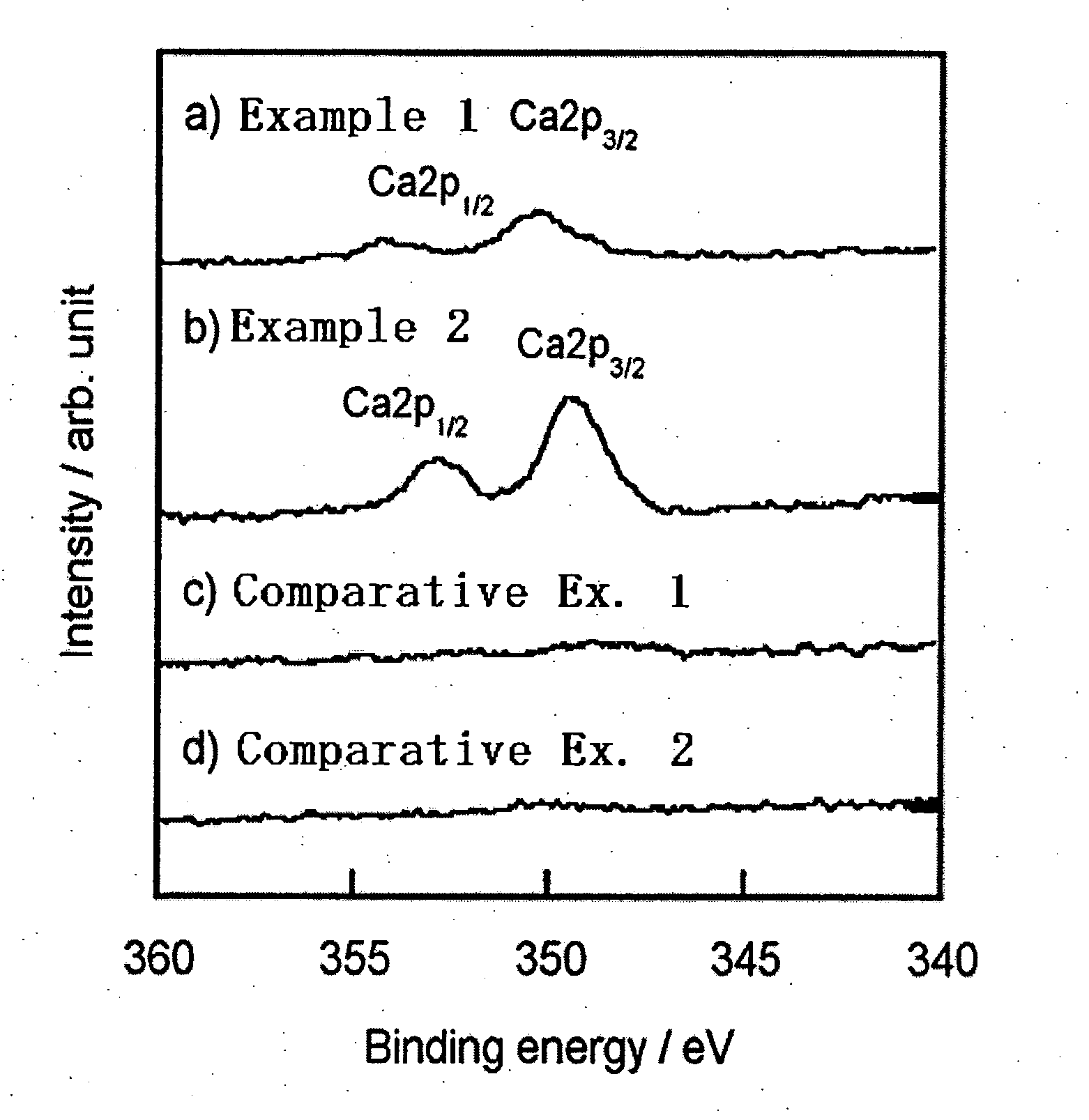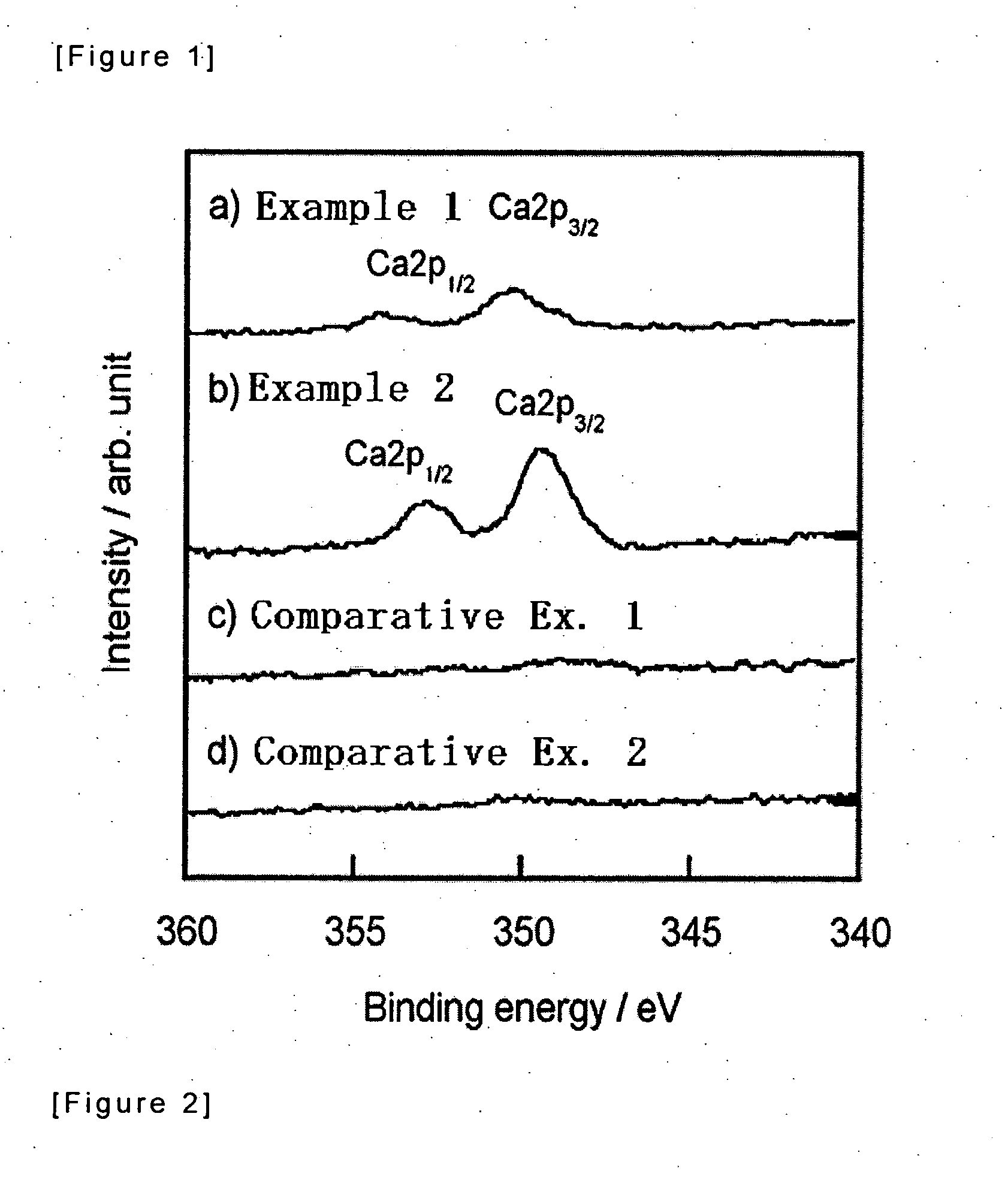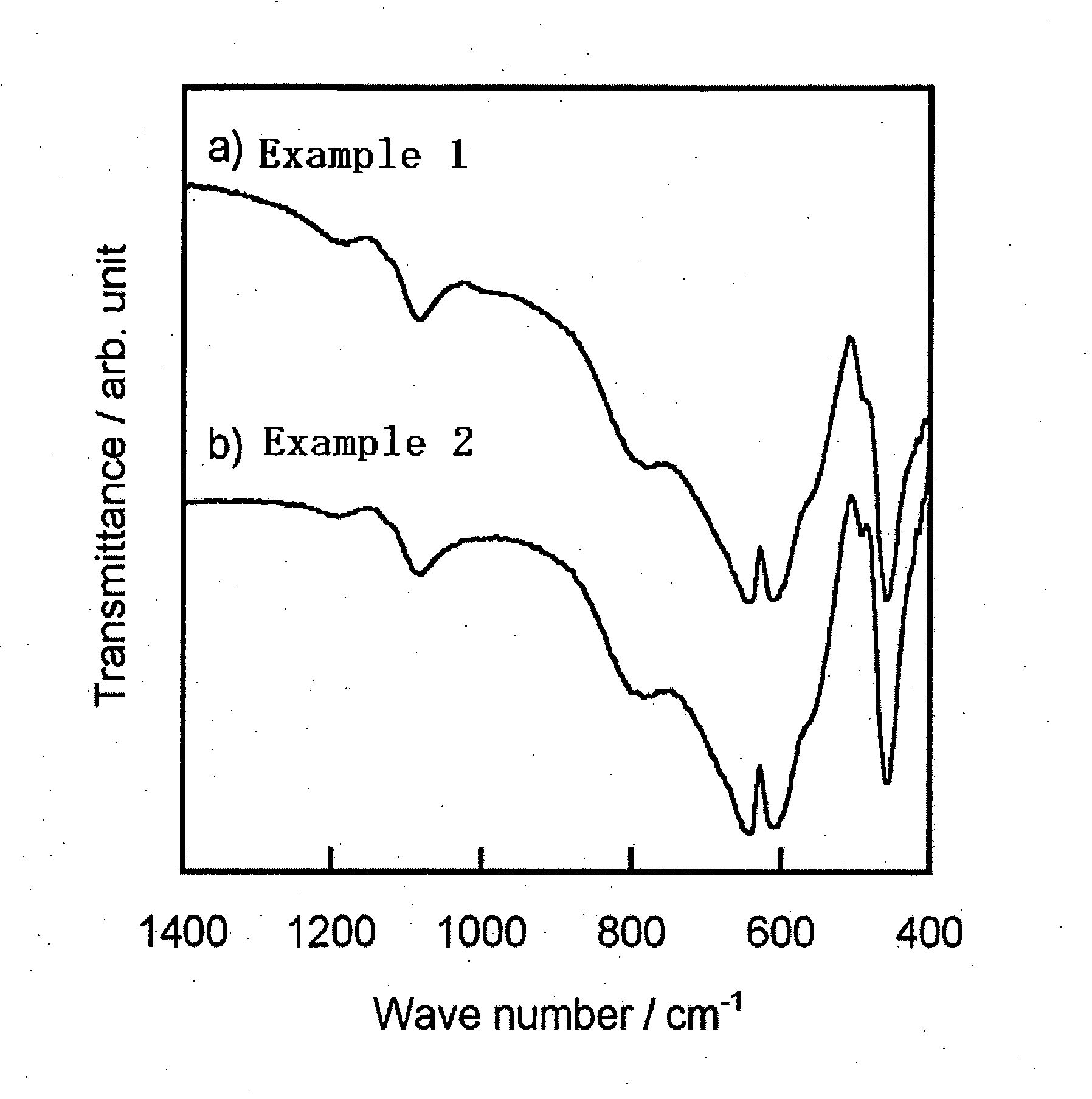Tissue-bondable material for medical use
a tissue-bonding material and medical technology, applied in the field of medical tissue-bonding materials, can solve the problems of not being able to apply the above method to various base materials other than titanium, the enhancement rate of bone forming is restricted, and the long-term clinical effect is hardly expected
- Summary
- Abstract
- Description
- Claims
- Application Information
AI Technical Summary
Problems solved by technology
Method used
Image
Examples
example 1
[0055]An alumina plate (Nikkato) as a ceramic material was soaked into a 10 mM aqueous solution of calcium chloride and treated under a hydrothermal condition at 125° C. for 7 days. After washing sufficiently, the alumina plate was analyzed by XPS to confirm calcium binding on the surface as shown in FIG. 1. The peak area was 2300 cps*eV.
[0056]For assessing the osteoconductivity, the alumina plate having calcium binding on the surface was soaked into a simulated body fluid for 14 days. On the surface of the alumina plate, a precipitate considered to be bone-like apatite was observed. The infrared spectroscopy of the precipitate in FIG. 2 shows the typical spectrum of apatite. From the above, it is understood that when an alumina plate having calcium binding on the surface is soaked into a simulated body fluid, bone-like apatite is precipitated with a surface area rate of about 20% (the surface area of the aluminum plate being taken as 100%). Namely, the above alumina plate shows ost...
example 2
[0058]An alumina plate (Nikkato) as a ceramic material was soaked into a 50 mM aqueous solution of calcium chloride and treated under a hydrothermal condition at 125° C. for 7 days. After washing sufficiently, the alumina plate was analyzed by XPS to confirm calcium binding on the surface as shown in FIG. 1. The peak area was 3200 cps*eV. The calcium peak is larger than that in Example 1 in which a 10 mM solution of calcium chloride was used, from which it is understood that a higher amount of calcium bound to the alumina plate.
[0059]For assessing the osteoconductivity, the alumina plate having calcium binding on the surface was soaked into a simulated body fluid for 14 days. On the surface of the alumina plate, a precipitate considered to be bone-like apatite was observed. The infrared spectroscopy of the precipitate in FIG. 2 shows the typical spectrum of apatite. From the above, it is understood that when an alumina plate having calcium binding on the surface is soaked into a sim...
example 3
[0061]An alumina plate (Nikkato) as a ceramic material was soaked into a 10 mM aqueous solution of calcium hydroxide and treated under a hydrothermal condition at 125° C. for 7 days. After washing sufficiently, the alumina plate was analyzed by XPS to confirm calcium binding on the surface as shown in FIG. 1. The peak area was 2600 cps*eV.
[0062]For assessing the osteoconductivity, the alumina plate having calcium binding on the surface was soaked in a simulated body fluid for 14 days. On the surface of the alumina plate, a precipitate considered to be bone-like apatite was observed. From the above, it is understood that when an alumina plate having calcium binding on the surface is soaked in a simulated body fluid, bone-like apatite is precipitated with a surface area rate of about 20% (the surface area of the aluminum plate being taken as 100%). Namely, the above alumina plate shows osteoconductivity.
[0063]For assessing the usefulness of the alumina plate having calcium binding on ...
PUM
| Property | Measurement | Unit |
|---|---|---|
| temperature | aaaaa | aaaaa |
| temperature | aaaaa | aaaaa |
| temperature | aaaaa | aaaaa |
Abstract
Description
Claims
Application Information
 Login to View More
Login to View More - R&D
- Intellectual Property
- Life Sciences
- Materials
- Tech Scout
- Unparalleled Data Quality
- Higher Quality Content
- 60% Fewer Hallucinations
Browse by: Latest US Patents, China's latest patents, Technical Efficacy Thesaurus, Application Domain, Technology Topic, Popular Technical Reports.
© 2025 PatSnap. All rights reserved.Legal|Privacy policy|Modern Slavery Act Transparency Statement|Sitemap|About US| Contact US: help@patsnap.com



